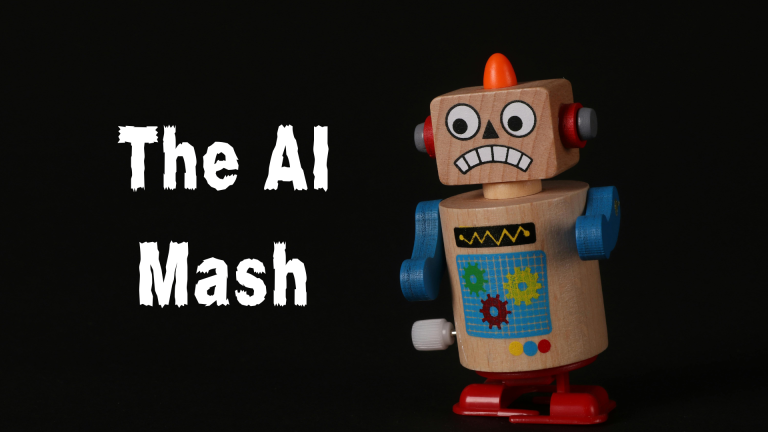Disillusioned by the AI Hype
In recent months, a palpable shift has occurred in boardrooms and among technology leaders: the initial euphoria about AI is giving way to skepticism, doubt, and in some cases, disillusionment. After years of feverish expectations, many organizations and executives are wrestling with a harder reality: the promises of transformative AI returns have not materialized across the board.
This article examines who is becoming disillusioned, why, and how recent overhype has contributed to this reckoning.
The Hype Cycle and the “Trough” Beckons
Technology adoption often follows a familiar arc: excitement and inflated expectations lead to a trough of disillusionment, before gradual maturation. In 2025, many observers argue AI (especially generative AI) is entering that trough.
Executives increasingly expect not just proof-of-concept experiments, but measurable business impact. When pilots stall or return nothing, optimism sours. Gartner and others now suggest GenAI is moving into this phase, where the weakest projects or misaligned expectations are exposed.
Where Disillusionment Is Coming From
1. Unrealistic Expectations & Overpromising
For years, Silicon Valley narratives and media coverage painted AI as a near-magic solution: the next industrial revolution. Many companies, pressured to keep up, rushed in without fully thinking through difficulties. The results? Projects that fail to deliver ROI, or deliver it only in narrow pockets.
Some have even abandoned most of their AI pilot efforts. In one survey, 42% of respondents admitted they were pulling back from generative AI experiments entirely.
When a new model launch (e.g. GPT-5) fails to live up to the hype, it becomes a focal point for disappointment. In one case, users complained that a replacement model was worse than its predecessor, forcing the vendor to reintroduce the older version.
2. High Failure Rate in Business Deployments
Data is emerging that generative AI pilots often fail to scale into real value. A major MIT-backed report found that ~95% of organizations see zero return on their generative AI investments and only ~5% drive meaningful gains.
The report calls the divide between winners and the rest the “GenAI Divide.” In practice, many pilots either stall or deliver marginal improvements that don’t justify cost or risk.
As one CIO piece put it: inconsistent results, hallucinations, and a lack of use cases tolerant to errors are bringing generative AI into the “disillusionment” phase.
3. Pilot Purgatory & Scale Barriers
A common pattern is what some call “pilot purgatory”: lots of small tests, proofs of concept, internal admirers, but hardly any movement into full deployment. The infrastructure, integration, change management, and operational costs behind real scale are often underestimated.
Even organizations with mature AI practices struggle to find and retain talent, instill AI literacy across teams, and build governance structures required for safe, repeatable scaling.
4. Quality, Hallucination, and Accuracy Concerns
AI hallucinations (fabricated or incorrect outputs) remain a practical risk. In domains needing high accuracy (legal, financial, medical) tolerance for mistakes is low. Many use cases simply can’t survive even low error rates.
Moreover, output quality (sometimes dismissed as “AI slop”) (low precision, unrealistic formatting, or shallow reasoning) alienates users and undermines trust.
These failures erode confidence among executives who equate AI’s promise partially with accuracy, reliability, and trust.
5. Economic Regret, Investment Blowback, and Executives’ Warnings
Some leaders and investors have started voicing caution. Comparisons to prior bubbles (e.g. dot-com) are being raised.
In one striking example, a large consulting firm admitted it would refund a government contract partly because its AI-augmented report contained fabricated references.
Moreover, major AI-driven companies and startups have run into trouble when overstating their tech claims. One startup, once touted as a “no-code AI app factory,” entered insolvency after investors flagged inflated sales and overhyped AI functionality.
Meanwhile, consumer product attempts, like AI wearables billed as breakthrough, have quietly been shut down or disconnected. One device maker discontinued sales and cut off server access, effectively bricking the product.
These failures make investors and executives more cautious, decreasing appetite for speculative bets.
6. Declining Adoption & Retreat Signals
A more subtle but telling indicator: surveys show that AI usage among large companies is declining. In the U.S., among firms with 250+ employees, reported adoption fell from ~14% mid-2025 to under 12%. That suggests some firms are pulling back.
These trends may not yet signal a collapse, but they reflect cooling enthusiasm, and a reassessment of what AI can realistically contribute.
7. Regulatory and Risk Awareness Rising
As regulators demand more clarity on AI risks, many companies are rethinking bold claims. One recent academic analysis shows the percentage of public companies disclosing AI risk in SEC filings jumped from ~4% in 2020 to over 43% by 2024.
This suggests that even firms eager to showcase AI are being pressured to own and disclose downside risk, and that contributes to a more cautious, less exuberant climate.
Why the Disillusionment Feels Sharper in 2025
- Acceleration of Hype: The hype curve in 2023-2024 set expectations very high. Many investments were made not based on matured use cases, but on fear of missing out. When returns fail to match the hype, disillusionment is more abrupt.
- Concentration of Failures at Scale: Small pilots often masked deeper integration, infrastructure, and operational issues. Only when attempts were scaled did core gaps surface.
- Speculative Climate & Capital Pressure: The flood of venture capital poured into AI companies increased pressure on them to deliver outsized returns, sometimes leading to overpromising.
- Visibility of Failures: When high-profile models or products falter (e.g. poor assessment in new model launches, or an AI wearable shutdown), it amplifies doubt across the ecosystem.
- Economic and Budget Reality: Firms under financial pressure may cut new tech experiments. When AI pilots don’t deliver quickly enough, they are among the first on the chopping block.
Who’s Saying “Enough” (or Already Walking Away)
- Executives / Boards – Some are demanding proof before allocating more budget. The veneer of “investing in AI to stay competitive” is giving way to deeper scrutiny.
- Leaders in Tech – Even AI-centric CEOs have begun flagging overexuberance or comparing the environment to past bubbles.
- Investors & Analysts – Hedge funds, institutional investors, and analysts are questioning valuations of AI-led companies and calling out overhype.
- Companies & Startups That Folded – Firms that overpromised, delivered little, or built on shaky foundations are default examples of the backlash.
- Users & Internal Teams – Engineers, product managers, users encountering poor AI output grow skeptical; when confidence from your own teams erodes, scaling becomes untenable.
Root Drivers of Disillusionment
| Driver | How It Contributes to Disillusionment |
|---|---|
| Unrealistic expectations / overpromise | Builds a fragile foundation; underdelivered results lead to sharp disappointment |
| High failure rate in deployments | Many AI pilots never transition into meaningful, scalable value |
| Pilot purgatory | Lack of movement from POC to production makes AI an experiment rather than capability |
| Hallucination / quality issues | In domains with low tolerance for error, such shortcomings kill trust |
| Investment backlash | High-profile failures reduce appetite for further spending |
| Declining adoption | Some firms retract or pause AI initiatives, signaling a cooling market |
| Regulatory / risk awareness | The need to disclose AI risk tempers unchecked optimism |
A Turning Point (Yet Not the End)
What’s happening now is perhaps a turning point, not a rejection of AI entirely, but a maturation. The disillusionment phase is painful, because many had staked reputational and financial capital on sweeping AI promises. But the reckoning also reveals a necessary correction: separating hype from realistic, sustainable AI value.
So, if feel disillusioned by the AI Hype and unmet expectations, understand that you’re not alone. And, also realize that there’s a way forward that includes AI (without the hype).
In an upcoming article, we’ll explore how to overcome the hype and disillusionment. For now, the story is one of recalibration: a collective experience of hope, overreach, failure, and slow recovery.







